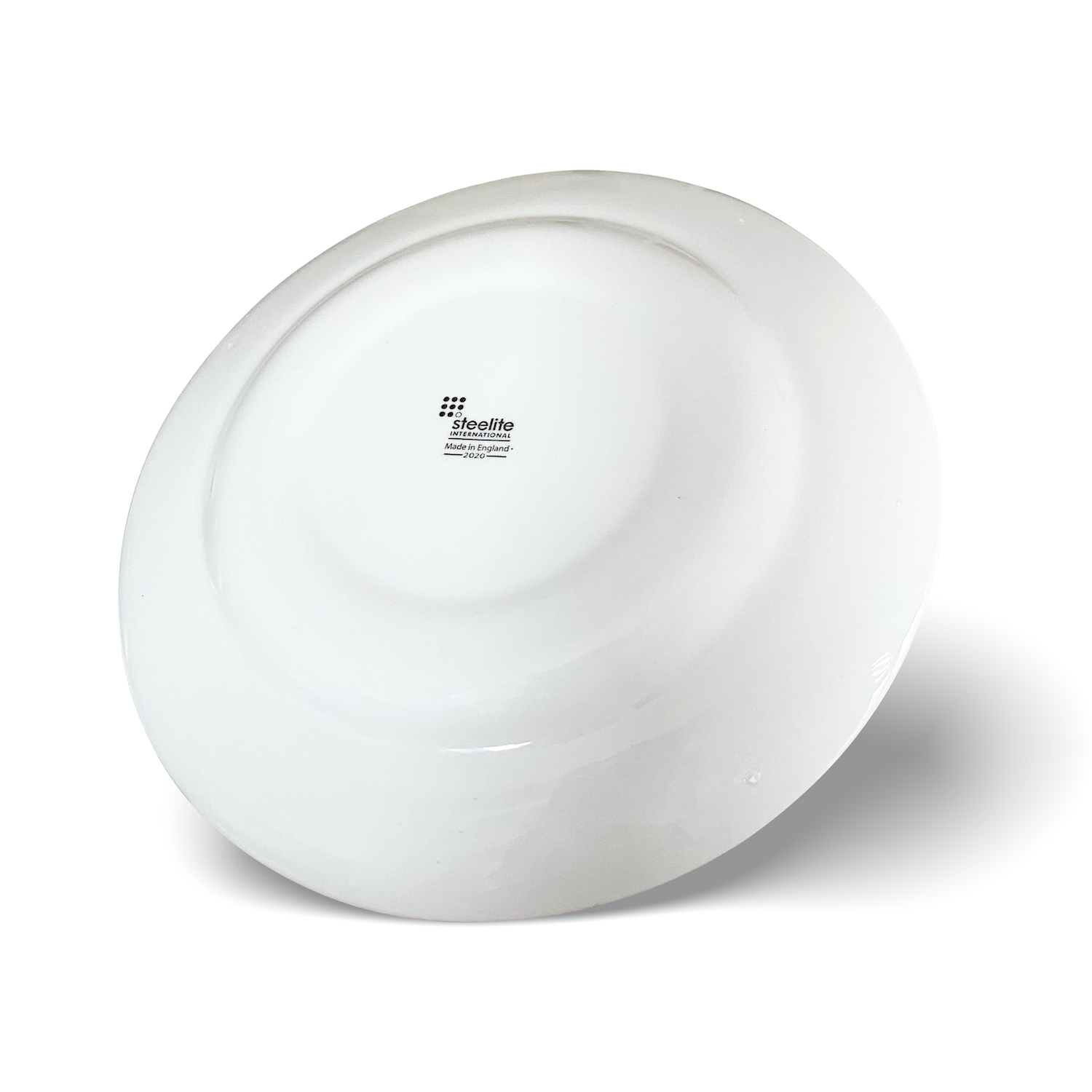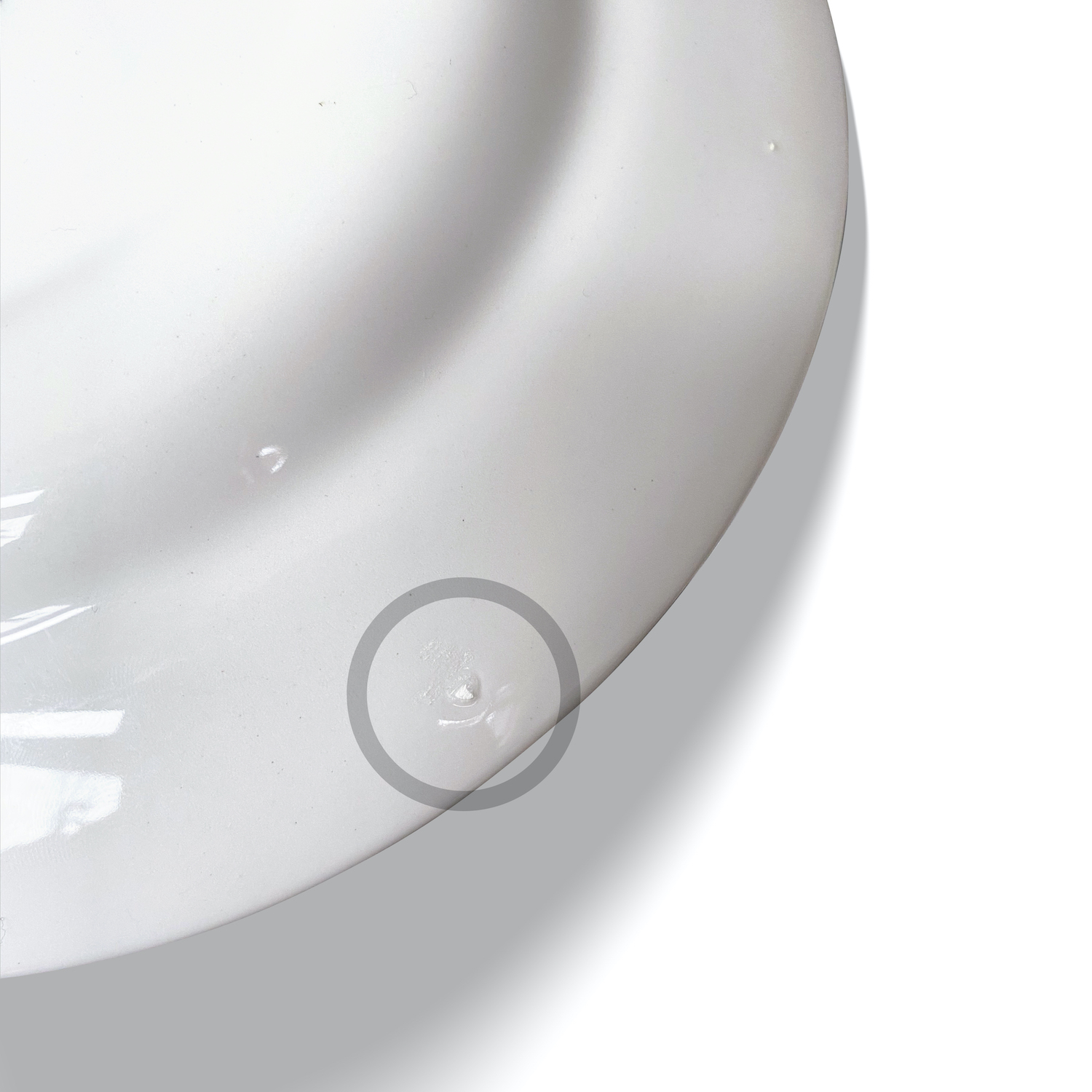If you receive your Steelite products and there seems to be a few 'beauty spots' on the back of your ware, don't fret. These are completely normal for ceramics produced for the hospitality industry and are actually a sign of good manufacturing and durability in our case. Without these marks, our products wouldn't be quite as sturdy as they are, and we want to tell you what they are and why they're there.

|
|
Pin Marks
Have you ever noticed that your favourite plates or bowls keep getting scratched when you're stacking them up in your cupboard for no known reason? This is most likely due to an unglazed 'foot' on the item. This unglazed area is very abrasive, and when it comes into contact with the surface of the other dish, can cause micro-abrasions in the glaze. This may not be noticeable at first, but over time, scratches and dullness in the centre of the piece can occur. To solve this problem, this is where the Pin Marks come into the equation. All Steelite flatware items are supported during the glazing firing process on three small pins, allowing us to fully glaze the foot of the item. The marks left behind are from tiny fragments of the material remaining in the glaze, which we then remove through a grinding process. The tiny areas from which the pin marks have been removed have no negative impact on a product’s performance. This removes one of the major causes of glaze wear, occurring when sliding impacts take place during stacking and helps to ensure that Steelite products give a long, trouble-free performance. |
Other Marks
You may notice other slight micro-abrasions on the underside of Steelite made pieces. These can be caused by a few things, but most regularly, are part of our automatic grinding process to remove the pin marks. Again, these are nothing to be concerned about, as they have no negative affects to the perfomrance of the piece, and is a standard occurance when making pottery.

